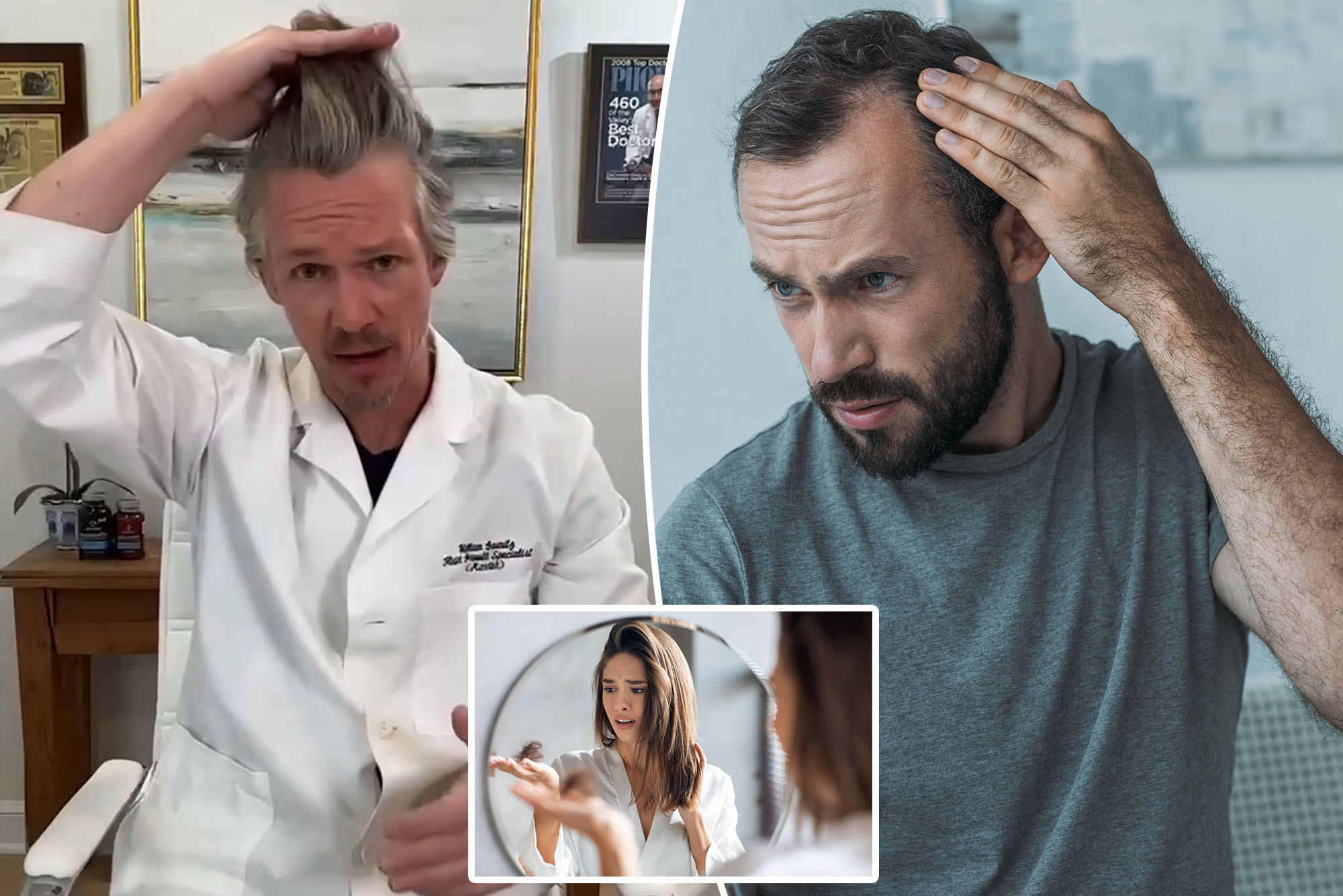
Starting to dilute?
More than 80% of men and nearly half of women experience hair loss during their lives, according to NYU Langone.
William Gaunitz was among this number. He began to lose his hair in the 17 -year -old and changed his career paths to become a tricologist and treat his condition.
According to Gaunzz, hair loss is caused by one of the three factors: DHT hormone (dihydrotestosterone), food and inflammation. He explained that each of these causes should be treated independently.
But how do you know what is the root cause for your brick crown or the temples of thinning?
Set up the hair pull test of his area, which he says is an easy, home diagnostic option to help you understand why you are losing your hair. He conducted the test after observing that hair loss is not uniform and treatment may require a multitrong approach.
“After managing tens of thousands of cases, I noticed that specific head fields seem to respond to different treatments in very clear ways from the norm,” he told the post.
During Covid, Gaunitz began to see patients practically. Without access to the scalp and microscopes, he instructed his clients to self-administer hair tests to survey different areas of the scalp to better understand where and why they were experiencing hair loss.
To do it, run your fingers through each of the following areas of your head twice. If more than a few hairs come out in your hand, that area in a problematic area for you.
According to Gaunz, each of the three areas corresponds directly to one of the three causes of hair loss.
Zone 1
Gaunitz judges the upper part of the head area 1.
“Zone 1 is very clearly documented as epicenter for loss of hair related to both men and women,” he explained.
“If you experience more hair loss at the top of your head compared to the sides or back, it is almost always connected to DHT. Other areas of hair loss can affect the tip, but DHT will worsen the area, creating the classic look of male or female hairstyle. “
He explained that without the impact of DHT, hair loss would appear all over the head or not at all.
“DHT -related hair loss is exclusively genetic due to a sensitivity to dihydrotestosterone at a certain time in your life. Without genetics, you will never experience DHT -related hair loss.”
DHT blockers are a good treatment for this type of hair loss, such as Minoxidil products like Rogaine.
Area 2
Zone 2 refers to the scalp over the ears, where hair loss is directly related to nutrition.
“Nutrition alopecia is caused by a lack of proper blood nutrition to serve hair glands to grow hair with full potential. Your body needs major nutrients such as iron, zinc, copper, vitamin D3, B12 and folate to rebuild tissue throughout the body, ”Gaunitz said.
He explained that when in the deficit, the body prioritizes critical systems of organs and tissues over hair growth, effectively reducing the amount of hair produced in the scalp to maintain nutrients for substantial function.
“There is a clear link between lower than optimal levels of vitamin D3, ferritin, serum iron and zinc associated with hair loss in Zone 2,” he continued.
“This has been constantly demonstrated in my clinics, where adding the optimal level of food to the primary categories, and the hair can be regenerated. This area does not respond to DHT blockers or typical treatments like current minoxidil.”
Area 3
Zone 3, or the inflammatory area, is the head range “below the occipital ridge in the neck of the neck”. This area is usually affected by dandruff, vascular swelling, loss of thyroid -related hair and alopecia ophiasis.
“Zone 3 is a loss of inflammatory hair, which is directly related to an area of your head that should never have hair loss, except in these circumstances. I have seen people correct DHT, and food, but yet, they have Pouring into the area when inflammation is still unresolved, ”Gaunitz said.
In this case, it is best to see a doctor for treatment.
Know your needs
While the science of hair loss is always developing, Gaunz insisted that knowledge is follicular power.
“I believe that the method of hair loss treatment area and the hair attraction test in the area are valuable guides what treatments and diagnostics should be used to address the specific situation of an individual’s hair loss,” he said.
“It is always best to understand which of the three reasons of hair loss are affecting you, softening them first and then start minoxidil about 30 days after you start treating the underlying cause.”
Minoxidil, usually sold under the name of the Rogaine brand, was first used to treat high blood pressure, but is now administered topically or orally to treat hair loss.
With minoxidil, hair growth usually occurs as treatment has been used for several months and lasts only as long as use continues.
#step #test #hair #thinning
Image Source : nypost.com